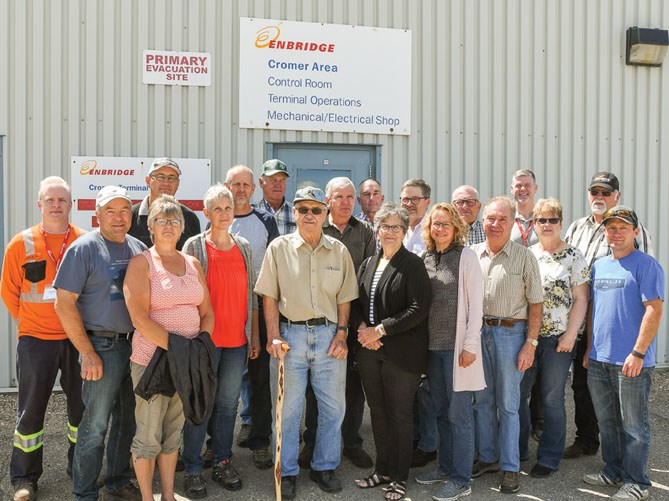Heavy snowfall and bitter winter temperatures followed by an unusually cold, wet spring and a sudden surge of warmth – these extreme weather conditions set the stage for the Red River flood which devastated southern Manitoba and the Dakotas in the spring of 1950.
At the height of flooding, most of the Red River Valley and its rich farmlands, some 1,600 square kilometres, were immersed in two to six feet of water. Flood conditions affected much of the low-lying country southwest of Winnipeg, where an urgent and pioneering undertaking – construction of the Line 1 pipeline -- was delayed in April and then forced to inch forward two months later when the water had begun to recede.
Interprovincial Pipe Line Inc. (IPL), now Enbridge, was building the pipeline to connect supply from the Alberta oilfields, following the massive discovery at Leduc in 1947, to the Great Lakes and U.S. markets via Superior, Wisconsin. Today, Line 1 is part of Enbridge’s Mainline pipeline network, a series of pipelines that safely transports 2.85 million barrels of oil per day from Edmonton to the U.S. Midwest and Ontario.
In June of 1950, Leo Gabrielle was 20 years old and living on the family farm near Cromer, Man. Still spry and sharp as a tack after celebrating his 90th birthday this May, Gabrielle remembers that wet spring and the construction of Line 1 very well.
“The first part of June we just had to get the crop in somehow, so that’s when my dad bought this little crawler tractor (with treads like a tank) to do the farm work - it was too wet for wheeled tractors.”
What was good for farming would also provide a solution for pipeline construction.
“The welding trucks were having trouble getting through,” Leo recalls. “The contractor got hold of my dad when they found out he had this tractor. So I got hired to pull the trucks through this wet ground.”
Working under such conditions required tremendous determination and ingenuity. According to an account in IPL’s definitive history book (Mileposts, the Story of the World’s Longest Petroleum Pipeline), “not only was it wet but the sandy soil would run back into the ditch as soon as it was excavated . . . Most of the welding was done on makeshift islands, and platforms were built out of skids to keep the pipe out of the water during the final welds.”
For Leo, his short stint in pipeline construction is intermingled with memories of growing up on the farm and helping his father with various chores.
“Dad would tell me, ‘run to the shop and get a hammer’ or ‘run to the shop and get a pair of pliers,’ so I was used to running back and forth. One day when I was pulling, I had three welding trucks and an X-ray truck behind me. I forgot my chain on the truck I’d pulled through and when I went to pull the next truck I had to run back and get my chain.
“One of the crew, maybe the supervisor, hollered ‘Leo!’
“I stopped and said, ‘What’s wrong?’
“He put up his hand, pointed with his finger and said, ‘Nobody runs around here!’
“I’ve never heard that statement since, but I’ve never forgotten it either.”
Seventy years later, Leo is still involved in the family grain farming operation now run by his son Bruce about 20 km east of Cromer. He first rented and in 1965 purchased the land, which is crossed by the Enbridge Mainline. “Over the years, I’ve seen every line go in,” Leo says proudly. “We get along 100 per cent with Enbridge. We’ve never had any problems that I can recall; in fact, they treat us so well, I advertise it.”
Like many a Prairie farmer, Leo gathers at the local coffee shop every morning to shoot the breeze with his buddies. Recently, having just returned from a landowner tour of Enbridge’s Cromer Terminal, he had a chance to share his impressions with his fellow farmers.
“I was telling them I never saw a piece of paper or garbage scattered or blowing around that yard. I’ve been to Disneyworld and Disneyland and it’s the same thing in those places. And I saw all these manifolds and pipes. There’s not even a stain of oil, nothing, on those connections. I pay attention to that sort of thing, and I advertised it this morning at coffee time – I can’t believe how Enbridge keeps it so clean.”




